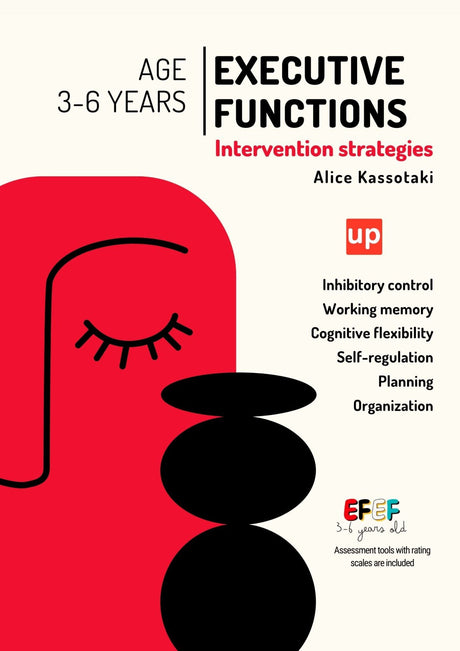Introduction
Imagine the human body as a complex, well-oiled machine. Each part plays an essential role, and when one part encounters difficulties, the whole system adapts. One such critical function is our ability to speak and communicate, which is often affected when a person undergoes tracheostomy. This post aims to shed light on the journey that follows a tracheostomy, focusing on the critical role of speech therapy.
Understanding tracheostomy
 Tracheostomy is a surgical procedure that involves creating an opening in the throat to insert a tube into a person's windpipe or trachea. This tube serves as an alternate route for air, bypassing the upper airway. Doctors may recommend a tracheostomy for a variety of reasons, such as prolonged illness, breathing difficulties, or blockages in the upper airway.
Tracheostomy is a surgical procedure that involves creating an opening in the throat to insert a tube into a person's windpipe or trachea. This tube serves as an alternate route for air, bypassing the upper airway. Doctors may recommend a tracheostomy for a variety of reasons, such as prolonged illness, breathing difficulties, or blockages in the upper airway.
While this life-saving procedure can significantly improve breathing, it often presents unique challenges for the individual. These challenges range from physical discomfort and lifestyle changes to more profound issues such as communication difficulties.
The relationship between tracheostomy and speech
Our body produces speech through a delicate balance of airflow and vocal cord vibrations, which the tracheostomy tube can disturb. With the tube in place, air is directed in and out of the trachea, bypassing the vocal cords, which can significantly affect a person's ability to speak.
In addition, tracheostomy can also affect swallowing abilities due to anatomical changes in the throat, further affecting a person's speech. It is important to remember that each person's experience varies depending on factors such as their health, the reason for the tracheostomy, and the type of tracheostomy tube used.
The role of speech therapy in the rehabilitation of tracheostomy
This is where speech therapy comes into play. Speech therapy is a form of therapy that focuses on improving a person's communication skills, including speech and language skills, and plays a key role in tracheostomy recovery.
Speech-language pathologists (SLPs) are the professionals who guide this recovery journey. They assess the person's speech and swallowing abilities and design an individualized treatment plan. For a person with a tracheostomy, the SLP's role extends to teaching the individual how to use alternative communication methods and strategies for safe swallowing.
Techniques in speech therapy for patients with tracheostomia
 A variety of speech therapy techniques can help tracheostomy patients regain speech and swallowing abilities. One such method is the use of a speech valve, a unidirectional valve that fits into the tracheostomy tube. When the person exhales, the valve closes, directing air upward past the vocal cords and allowing speech.
A variety of speech therapy techniques can help tracheostomy patients regain speech and swallowing abilities. One such method is the use of a speech valve, a unidirectional valve that fits into the tracheostomy tube. When the person exhales, the valve closes, directing air upward past the vocal cords and allowing speech.
Another technique is the cuff deflation method, in which the cuff of the tracheostomy tube is deflated to allow air to flow over the vocal cords. It is important to note that these techniques should be performed under the guidance of healthcare professionals.
These methods, combined with exercises that focus on breath control, voice amplification and safe swallowing, can significantly improve a person's communication skills. It is important to remember that progress varies from person to person and requires patience and perseverance.
1. Training of the Passy-Muir speech valve (PMSV):
The Passy-Muir Speech Valve is a small, one-way valve that can be attached to the tracheostomy tube. It allows air to pass into the trachea and lungs, but when the patient exhales, the valve closes. This redirection of airflow upwards, past the vocal cords, allows speech. Speech and language therapists often provide training to help patients adjust to this new way of speaking.
2. Deflate the cuff:
On some tracheostomy tubes, a small inflatable cuff around the tube helps seal the airway, ensuring that all airflow passes through the tube. By deflating the cuff, some exhaled air can pass up and over the vocal cords, allowing speech to occur. However, this method is not suitable for everyone and should only be done under the guidance of healthcare professionals.
3. Swallowing exercises:
Tracheostomy can affect swallowing, which is associated with speech. Speech and language therapists often use various exercises to strengthen the muscles involved in swallowing and to coordinate the process more effectively. These exercises may include the Mendelsohn maneuver, the swallowing effort, or tongue strengthening exercises.
4. Breathing exercises:
Breath control is vital for speech. Techniques that strengthen the respiratory system, such as deep breathing exercises and controlled coughing, can help improve voice quality and volume.
5. Voice exercises:
These exercises are designed to improve vocal cord function and enhance speech quality. They may include humming, producing specific sounds or even singing.
6. Augmentative and alternative communication (AAC) devices:
In situations where oral speech is a significant challenge, AAC devices, such as speech-generating devices or communication boards, may be useful. They offer alternative ways for patients to express themselves.
7. Communication strategies:
In addition to specific exercises and techniques, a speech therapist will also teach communication strategies. This could include teaching the patient to pause and take breaths at regular intervals while speaking or how to best position their body and mouth for optimal speech production.
Challenges faced by people after tracheostomy
A tracheostomy can present several challenges to an individual, affecting their physical, emotional and social well-being.
1. Physical challenges:
Speech and communication: as we have discussed, a major challenge is difficulty with speech. Air deflection away from the vocal cords can make verbal communication difficult or impossible without intervention.
Swallowing difficulties: Tracheostomy can interfere with swallowing function, leading to dysphagia. This can make it difficult to eat and drink and can increase the risk of aspiration (food or liquid entering the airway), potentially leading to pneumonia.
Breathing: While tracheostomy helps with breathing, the presence of the tracheostomy tube can cause discomfort. There is also the constant need for suctioning to keep the airway clear of mucus and secretions.
2. Emotional and psychological challenges:
Body image concerns: The presence of a tracheostomy tube can lead to self-consciousness and body image concerns, affecting a person's self-esteem and emotional well-being.
Fear and anxiety: The procedure and the changes that follow can cause fear and anxiety. Concerns about the possibility of the tracheostomy tube becoming blocked or dislodged can also cause anxiety.
Depression: The combined physical and emotional challenges can sometimes lead to depression. The potential loss of verbal communication can be particularly difficult to cope with, leading to feelings of isolation.
3. Social challenges:
Social isolation: Changes in appearance and speech can sometimes lead to withdrawal from social activities. There may also be a fear of negative reactions from others.
Relationships: Communication difficulties can put a strain on personal relationships. It can be frustrating for both the individual and their loved ones when communication becomes challenging.
Professional life: Depending on the nature of their job, tracheostomy can affect the person's ability to continue in their profession, especially if it involves a lot of talking.
Dealing with these challenges often requires a multidisciplinary approach involving doctors, speech and language therapists, psychologists and social workers, alongside support from family and friends. With the right support and appropriate interventions, many people with tracheostomies can live full and productive lives.
Advice for families and carers
 As a family member or caregiver, watching a loved one go through the tracheostomy journey can be challenging. However, your support can make a significant difference. Here are some ways you can help:
As a family member or caregiver, watching a loved one go through the tracheostomy journey can be challenging. However, your support can make a significant difference. Here are some ways you can help:
Learn about the procedure: Understanding the tracheostomy process can equip you with the knowledge to provide the right support.
Encourage speech therapy: Reinforce the importance of speech therapy sessions and become a source of motivation.
Practice patience: Progress may seem slow, but remember that every small improvement is a step forward.
Effective communication: learn alternative methods of communication to better understand your loved one's needs. This could be a simple gesture system or a communication board.
Emotional support: travelling can be emotionally taxing. Be there to listen, encourage and provide a comforting presence.
Conclusion
The journey after a tracheostomy can seem daunting, but with the right resources, such as speech therapy, and a strong support system, it can be successfully navigated. The process requires patience, resilience, and a lot of hard work, but the ability to communicate effectively and live a fulfilling life makes it all worth it.
Remember, each person's journey is unique, and so is their recovery timeline. It's not about how quickly you get to the destination, but celebrating each milestone along the way.
Additional information
Navigating this journey can be made easier with the right resources. Here are a few that may help you:
American Speech-Language-Hearing Association (ASHA): ASHA: ASHA provides a wealth of resources on speech therapy and tracheostomy.
National Tracheostomy Safety Project (NTSP): The NTSP offers guidelines and resources for tracheostomy care and safety.
Speak Up Tracheostomy: An organization that offers support and resources for people with tracheostomy and their families.
Remember that professional help is always available. Reach out to health professionals or support groups in your area for more personalized guidance. You are not alone in this journey and with the right support you can successfully navigate the path to recovery.
Original content from the Upbility writing team. Reproduction of this article, in whole or in part, without credit to the publisher is prohibited.












